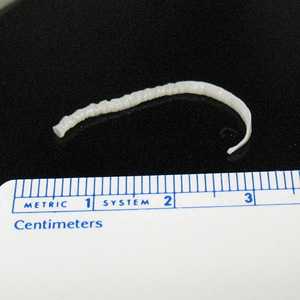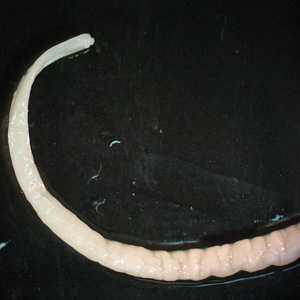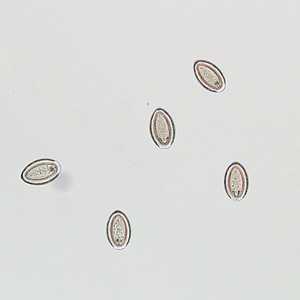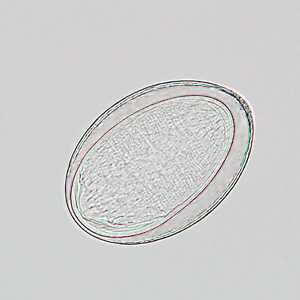
Case #241 - December, 2008
A small, cream-colored worm-like object was discovered in the diaper of a 15-month-old child. The suspect worm was collected by the child’s parents and sent to the State Health Department for identification. A laboratorian at the State Laboratory identified the worm but requested confirmation. The specimen was sent to the Reference Laboratory at CDC for diagnostic assistance. Figures A and B show the gross morphology of the specimen. Figures C and D show smaller structures that were observed in the transport medium (10% formalin). These smaller structures were approximately 85 micrometers in length. What is your diagnosis? Based on what criteria?

Figure A

Figure B

Figure C

Figure D
Case Answer
This was a case of acanthocephaliasis caused by Moniliformis moniliformis. Diagnostic features included:
- the presence of oval, elongated eggs with a smooth, clear shell.
- the presence of an acanthor containing hooks within the eggs.
- an adult worm (Figures A and B) that showed pseudosegmentation and a partially-extended proboscis (Figure B).
Rats are the usual definitive host for M. moniliformis but humans can become infected by ingesting beetles or cockroaches harboring the infective intermediate stage (cystacanth).
More on: Acanthocephaliasis
This case was kindly contributed by the Connecticut Department of Health.
Images presented in the monthly case studies are from specimens submitted for diagnosis or archiving. On rare occasions, clinical histories given may be partly fictitious.
DPDx is an education resource designed for health professionals and laboratory scientists. For an overview including prevention and control visit www.cdc.gov/parasites/.
- Page last reviewed: August 24, 2016
- Page last updated: August 24, 2016
- Content source:
- Global Health – Division of Parasitic Diseases and Malaria
- Notice: Linking to a non-federal site does not constitute an endorsement by HHS, CDC or any of its employees of the sponsors or the information and products presented on the site.
- Maintained By:


 ShareCompartir
ShareCompartir